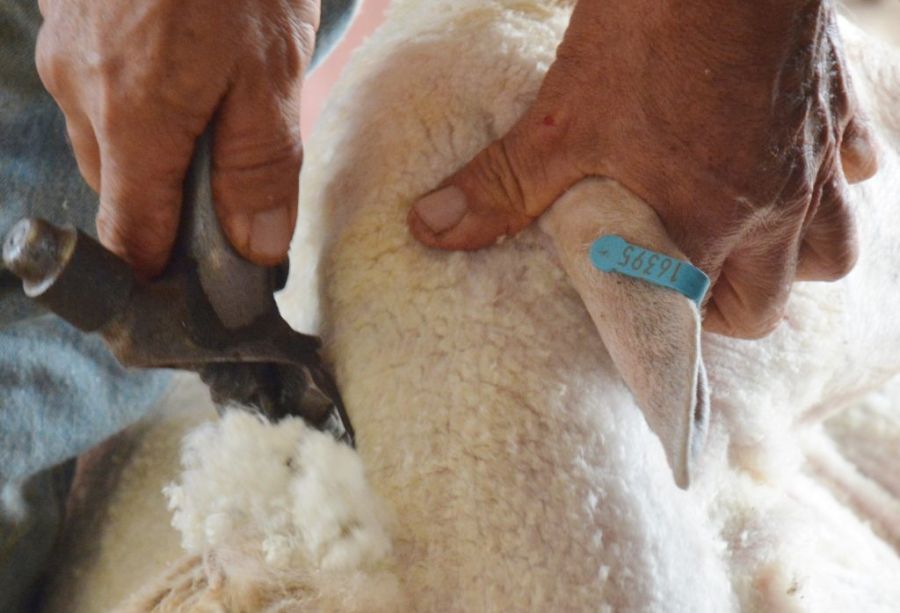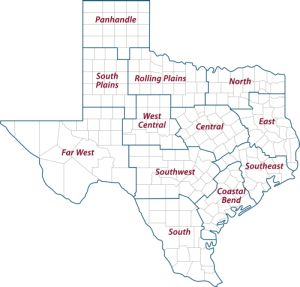Source: AgriLife Today | Dec 11, 2019

After a record start to 2019, wool prices declined as uncertainty in the market made price speculation for buyers iffy, according to a Texas A&M AgriLife Research expert. Ronald Pope, Ph.D., AgriLife Research director of the Bill Sims Wool and Mohair Research Lab, San Angelo, said wool prices are still good, but trending downward after hitting a historic high in February.
In February, clean wool hit a record high, $6.90 per pound, in the U.S. Clean wool was $5.50-$5.85 per pound on average in the spring of 2019. Clean and greasy wool prices are now at $4 and $2 per pound, respectively, with no signs of prices holding.
Prices bottomed out in August but have not gained enough traction to create prices that buyers can rely on. Mohair prices have also dipped alongside wool, he added.
Pope said a litany of factors contributed to the price decline.
“Consumer demand is still there, especially for certain items,” he said. “Uncertainty amid inconsistent pricing has left buyers speculating. They don’t want to buy today and then see the price go down further. Most process it, and if prices decline, they can’t get back what they have put into it. That’s created a bit of hesitance on the demand for raw wool.”
Trends
Pope said buyer demand has hit a lull globally. The trade war with China has impacted U.S. producers to some degree, but China has also slowed imports from Australia, New Zealand and South Africa. “Tariffs are playing a role, but they aren’t the only driving force.”
Pope suspects much of the decline is a price correction after reaching historic highs and wool stockpiles.
The pipeline wool travels from shearing to retail shelves is long, Pope said.
“Spring 2019 wool won’t be in a garment until fall 2020,” he said. “It takes a long time.”
The prolonged drought in Australia and subsequent fires could change the situation, but Pope said it’s anybody’s guess when buyers will begin looking for new raw wool consistently.
However, consumer trends show demand for wool socks and next-to-skin active- and performance-wear for outdoor enthusiasts, including runners, continues to grow.
“There’s still good consumer demand, and those consumers have shown a willingness to pay for quality,” he said. “It’s a value-added product to them. They see how it performs compared to cotton and other textiles, and quality machine-knit wool is what they want.”

AgriLife Extension district reporters compiled the following summaries:
CENTRAL: Very dry conditions continued with mild temperatures. Temperatures have changed wildly in recent weeks. The forecast called for another 40-degree temperature change with an expected cold front. Small grains were off to a good start in areas with better soil moisture and spotty in other areas. All small grains could use rain. Preparation for corn planting progressed. Cattle were in fair condition with producers feeding hay. Stock tanks were showing signs of drought, and some runoff rain would be beneficial. Some producers were culling cattle and hauling water. Nearly all counties reported short soil moisture levels and poor rangeland and pasture conditions.
ROLLING PLAINS: Temperatures were warmer than normal, and a few areas received small rains. Cotton harvest continued. Producers continued to plant winter wheat. Cattle producers were supplementing cow/calf and stocker operations with protein supplements and hay where forages were limited.
COASTAL BEND: Conditions were warm and humid with no rain reported. Soil moisture conditions were starting to decline rapidly. Some fertilizer was applied in preparation for spring planting. Winter forages were actively growing but needed rain. Livestock water was declining, and producers’ concerns were growing. Cattle body conditions were good. Supplemental feeding of hay and protein continued for livestock. Large runs of calves and cull cows were sold at local auction barns. Prices were average to good. Pecan harvest was almost complete for most producers.
EAST: Weather was warmer and drier than normal for early December. Winter crops started to grow but have struggled amid dry conditions. Upshur County reported producers made a final cutting of hay that frost cured. Pasture and rangeland conditions were fair. Subsoil and topsoil conditions were adequate. Livestock were in fair to good condition with supplemental feeding. The cattle market was stronger than previous weeks. Warmer temperatures caused an influx of flies in Houston County. Wild pigs remained active and caused damage.
SOUTH PLAINS: Conditions were very dry, which was affecting dryland wheat and oats, rangelands and pastures. Irrigated wheat looked okay. Cotton harvest neared the end with most yields below expectations. A couple of the gins had completed ginning for the season. Stocker cattle were being placed on wheat. Cattle were in good condition overall.
PANHANDLE: Cotton harvest was complete in southwestern areas of the district with below-average yields and grades reported. All winter wheat had emerged, and most was in fair condition, but was in poor condition in southern parts of the district. Pastures and rangelands were in fair to good condition. Subsoil and topsoil moisture levels were short to adequate. Soybeans were harvested.
NORTH: Topsoil moisture levels were adequate to short. Temperatures were mild across the district. Small amounts of precipitation delayed wheat planting and cotton harvesting in some counties. Winter pastures looked better and should benefit from the additional rain. Livestock were in good condition. Producers were feeding supplemental feed and hay. Feral hogs were very active.
FAR WEST: Temperatures were in the upper 80s with lows in the mid-30s. Temperatures shifted toward winter conditions. No rainfall was reported. Most cotton was harvested. Yields were lower than expected with most dryland production barely or not even covering input costs. Grades were decent. Wheat plantings increased, but most growers were still waiting on sufficient moisture. Pecan quality was good. Cow/calf producers were preparing cattle for the upcoming breeding season. Livestock were in good condition. Producers continue to feed livestock and wildlife. Rangeland conditions were poor as grasses were going dormant for the winter.
WEST CENTRAL: Temperatures were cool in the mornings with warm afternoons. All areas needed rain. Small-grain growth slowed due to drought, and insect pests increased. Livestock looked fair to poor due to the lack of grazing. Supplemental feeding of livestock increased. Demand at local cattle auctions was good. Stocker steers were $8 higher per hundredweight. Stocker heifers were $3-$7 higher per hundredweight. Feeder steers were $2-$3 higher. Feeder heifers were $5 higher per hundredweight. Packer cows, bulls, pairs and bred cows were steady.
SOUTHEAST: Wind and warmer temperatures were drying up soil moisture. Some areas of the district were showing deficient moisture levels more than other areas. Soil moisture levels ranged from adequate to very short with adequate being most common. Grimes County reported fair pasture conditions and dry conditions, while Jefferson County reported fields remained wet from recent rains. Rangeland and pasture ratings were excellent to very poor with fair being most common.
SOUTHWEST: Dry weather continued with mild and seasonal temperatures reported. Rainfall was needed to improve pastures for grazing. Fall calving was wrapping up. Livestock were in fair condition, and producers continued with supplemental feeding.
SOUTH: Mild weather conditions with adequate to very short soil moisture levels were reported. Maverick County reported daytime temperatures reaching 85 degrees and 50 degrees overnight. Light rainfall was reported in Zavala County. Peanut harvest in Atascosa County was about 75% complete. Small grains had emerged but needed rain. Fields in areas that received rain responded well to moisture. Pasture and rangeland conditions remained fair, but moisture was needed. Soil moisture levels continued to decline in most areas. Supplemental feeding of livestock continued. Some areas were reducing supplemental feeding. Bermuda grass was dormant. Fall vegetable crops were starting to progress well. Spinach harvest was active, and cabbage made good progress. Most crop fields in Hidalgo County were being prepared for spring planting. Some growers made pre-plant water applications to keep moisture levels reasonable. Hidalgo County had not reported a frost, so pastures were in good condition for this time of the year and were providing adequate forage. Hay producers were harvesting their last fields for the year, but quality was poor. Hay was being brought in from north and south of Jim Wells County. Bales were starting to exceed $65 for medium quality 1,000-pound round bales. High-quality hay was approaching $100 per bale. Water availability in ponds was declining. Cattle prices were low.
